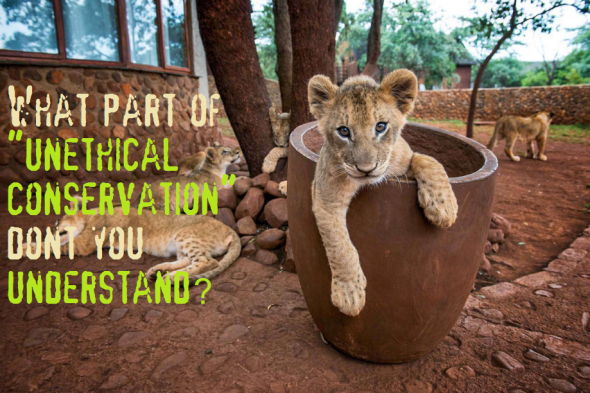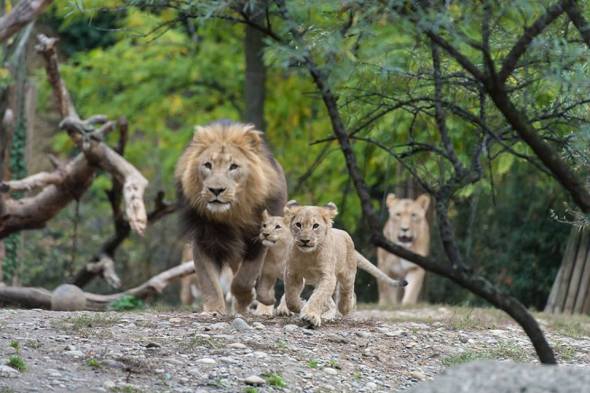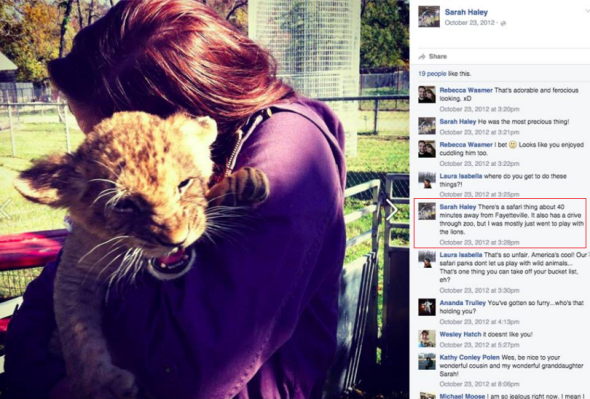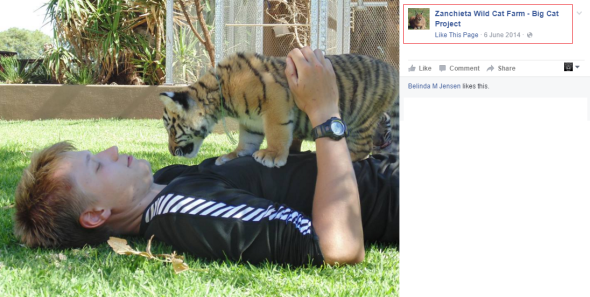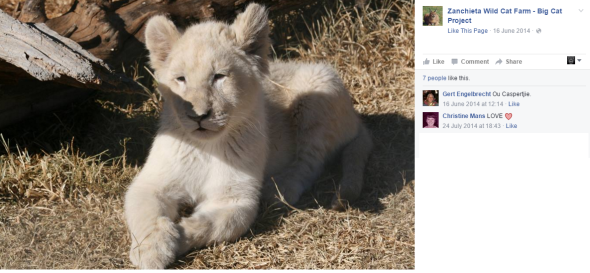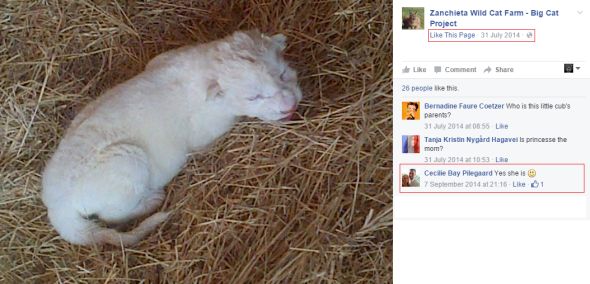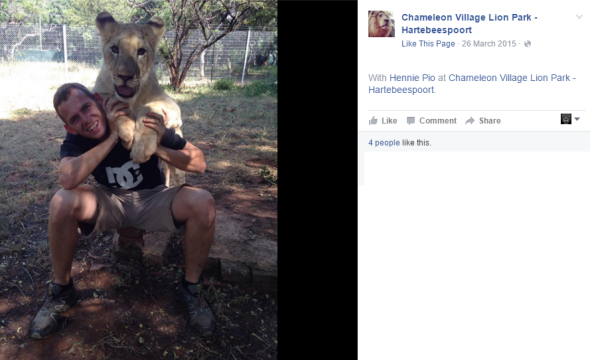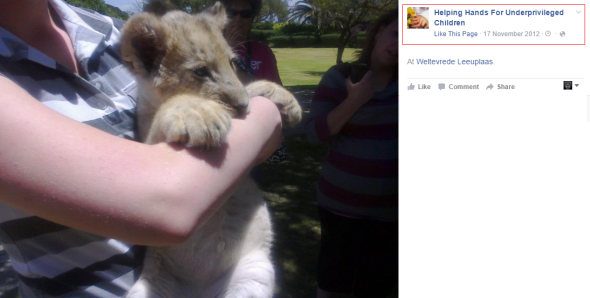WHY ARE WE STILL HUNTING RHINOS FOR | WHEN NO AMOUNT OF FUNDING HAS REDUCED POACHING?
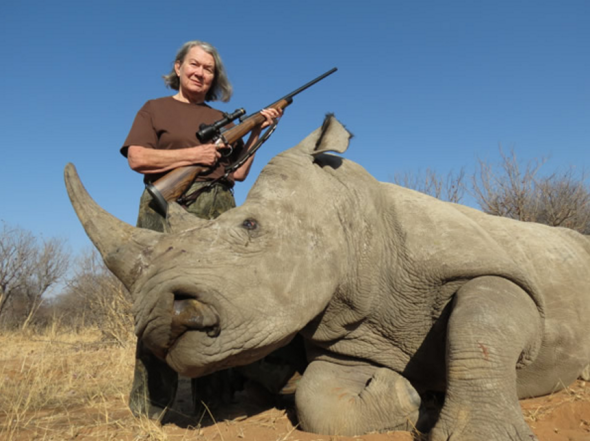
WHY ARE WE STILL HUNTING RHINO?
Why are foreign and native Africans still trophy hunting Rhinoceros for, when no amount of funding generated from these hunts has actively decreased poaching? Image credit: (Mrs Janice Hull, Limcroma South Africa).
Over five years ago I and a group of dangerous game hunters (DGH’s) were involved within a heated debate relating to the money allegedly generated from rhino hunting. The question I asked (and continue to ask) was: “Why are we still hunting rhino for when the money generated from these hunts doesn’t appear to be having any affect whatsoever on decreasing rhino poaching or increasing conservation efforts and security for African rhinos”? (Image above: Hunter - American Janice Hull).
The answer[s] I received were mixed opinions, abuse, and lies. I aimed this question at a number of professional hunters - (PH’s) working in South Africa, and Namibia most of which were American. While the vast majority of dangerous game hunters stated money raised from hunts was directed back into rhino conservation, I’m still after five years questioning where this money is actually going because rhino poaching is not decreasing whatsoever?
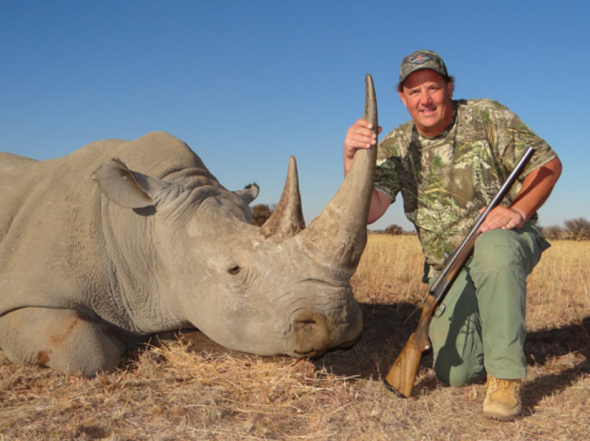
Image Credit: Trophy hunter Mr Loddie Naymola
Since 2008 poachers have slaughtered a staggering 5,940 Rhinoceros - most of which have been poached within South Africa’s flagship park identified as the Kruger National Park. From the year of 2007 rhino poaching figures began increasing rapidly. A total of 13 rhino were bludgeoned to death in 2007. Meanwhile in 2009 South Africa lost a further 122 rhinos (due to poaching).
However come 2011 we really began to see poaching figures rise, come the end of December 2011 a whopping 448 rhinos had been slaughtered by poachers to fuel the Asian demand for pseudo rhino horn medicine. Come 2013 figures shot through the roof resulting in some 1,003 rhinos poached stated the Department of Environmental Affairs come 2013 December end. Then the largest stats were reported back in 2014 of which South Africa lost some 1,215 Rhinoceros to poachers. Yet ‘hunting revenue is preserving our ionic species’?.
Unfortunately at some point from 2014-2016 the Department of Environmental Affairs Minster Honorable Edna Molewa placed a complete ban on the public reporting of any rhino poaching figures, there was no reason as to why this ban was implemented, of which to date still remains in place. Coincidentally (2015’s poaching statistics) had decreased somewhat - of which come December 2015 some 1,175 rhinos had ‘allegedly been poached’. Isn’t that coincidental, a blanket ban on poaching figures is ordered, then come the next year a decrease is seen!.
SOURCE: POACHING STATISTICS.
The SOUTH AFRICAN DEFENCE WEB stated back in January 2016 that a ‘lack of rhino poaching information was negatively affecting anti poaching’. However despite the governmental blackout on rhino poaching incidents numerous organisations such as ‘Stop Rhino Poaching and ‘Outraged South African Citizens against Poaching’ had reported via media, press and anti poaching reports a small rhino poaching decline.
However both of these organisations didn’t obtain their reports from the government, or did they?. So last years poaching stats could indeed be higher than what has been stated in the public domain. Furthermore both Facebook/Online groups/NGO’s share there statistics openly. So in all honesty there is no evidence whatsoever to prove a poaching decline from 2015 has occurred. Moreover and as explained - I myself find it awfully suspicious that since the 2015 poaching report blackout by the South African government - poaching stats just coincidentally decrease like that?.
Elise Daffue whom ‘allegedly runs some form of rhino intelligence group’ (on Facebook - identified as Stop Rhino Poaching), and not in the actual field, stated: “The drop in kills is testimony to the huge effort being made on the enforcement side. Environment Asset Protection strategies have been formulated and implemented over the past three years, guiding the strategic and operational plans nationally – from the ranger in the bush who detects the spoor to the prosecutor who fights that bail is denied. Keeping the numbers down depends entirely on good field work and reserve security, good investigations and good convictions”
While Elise Daffue has stated there was a drop in rhino poaching due to a “huge effort being made on the enforcement side” there remains no evidence whatsoever proving there has been a decline in rhino poaching from 2014-2015. Moreover if there is evidence where has this data come from?. Furthermore whenever we see hunters and ‘animal lovers mingling together’, regardless of what you state your organisation is and does - alarm bells begin ringing, especially coming close to the next CoP summit.
The Founder of Stop Rhino Poaching is friends with a hunter identified as Gustav Collins who runs the Mattaniah Game Reserve Furthermore Elise Daffue is also associated with the individual known as Simon James Naylor who is the Conservation Manager for Phinda Private Game Reserve of which has connections to various hunting organisations and the (WWF) that supports sustainable hunting of Rhinoceros within South Africa and Namibia. Finally (among many others) we have Mr Mark Lautenbach who works as a Specialist Freelance Guide at Ukuthula Lodge. Elise Daffue founder of Stop Rhino Poaching is also friends with a Department of Environmental Affairs worker, and numerous other governmental bodies, police and hunters.
While the above details may not seem overly important, when we’re trying to locate data on hunting statistics, money generated from these activities and more, suspicions are raised when we locate so called professional organisations that are connected to numerous hunting organisations; and institutions such as ‘petting farms’ I.e Ukutala Lodge that has connections with the canned hunting industry and, has featured in a (Blood Lion documentary).
So as one can see it all becomes rather confusing when all we want is upfront and honest answers, however when we ask questions and later find out there are numerous connections to the hunting and possibly ‘pseudo hunting trade’ will we even obtain a serious, straightforward and honest answer? When we’re lied to by hunters, how can we possibly trust Non-Governmental Organisations that are aligned to the very people whom are lying, and are hunting our rhinos while pretending to be so called conservationists? Moreover we (the organisation) do not believe there has been any decline whatsoever relating to rhino poaching. We do though believe that this so called ‘decline may be playing a role in this months CoP17 Summit’ relating to rhino horn legislation.
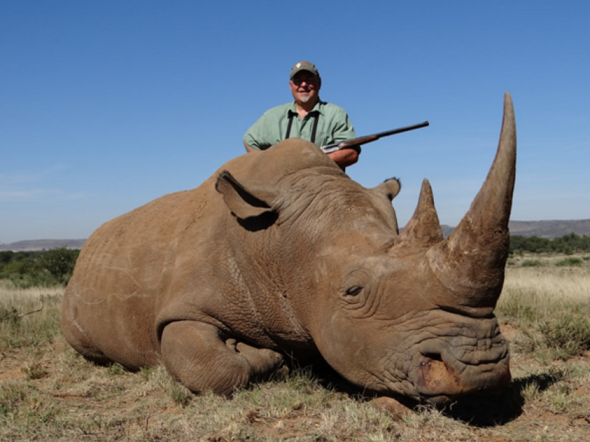
Image Credit: European trophy hunter, Mr Dennis Schemmel
Back in July 2016 it was reported that Rhinoceros poaching was finally without a doubt at ‘tipping point’. South Africa has seen the largest poaching rates recorded at some 72% from 2011-2015. Namibia recorded a loss of 10.8% from 2012-2015. Zimbabwe recorded a loss of 3.1% from 2012-2015. Kenya has recorded a loss of 4.4% from 2012-2015. Finally ‘other African range states mainly in Central Africa’ recorded a loss of 2.5% from 2012-2015.
While its been reported that some 25,000 Rhinoceros remain on the African continent - a depressing near six thousand have been poached all over the continent from 2012-2015. Yet hunting revenue from one of Africa’s most expensive game animals is allegedly reducing poaching? How is this possible, when we’ve lost so many rhinos, and reports from the Global Initiative have confirmed ‘rhinos are at tipping point’.? Furthermore how can the hunting community continue to state that revenue from rhino hunting is helping to secure the rhinos future when 1. It clearly isn’t due to poaching statistics increasing, and 2. The majority of hunters today are now supporting an international rhino horn trade ban lift?
The Global Initiative stated: “Dozens more rhino have been shot in so-called “pseudo-hunts”. Across Europe, castles and museums have been raided by criminal gangs in search of rhino horn trophies. And in the United States, businessmen, antique dealers – even a former rodeo star and a university professor – have been implicated in the illicit trade”. Driven by seemingly insatiable demand in Southeast Asia and China, rhino horn has become a black market commodity rivalling gold and platinum in value.
SOURCE: GLOBAL INITIATIVE.
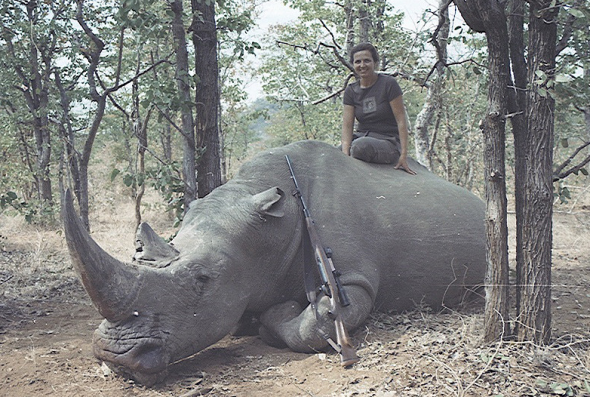
Image: Female rhino hunter, origin of hunter unknown and name. South Africa?
To date there has been very little forthcoming information in relation to revenue generated from African rhino hunts, and where exactly this hunting money is going. Furthermore with rhino poaching still increasing, and tipping points now recorded by ‘various trusted organisations’ the question must now be raised why are we still hunting Rhinoceros?
From the 1940’s tiger hunting was common among many international and local tourists in India. However so too was tiger poaching. It was alleged that revenue from tiger hunting was actually helping to preserve the tiger species and other mammals too. Unfortunately this turned out to be complete codswallop. Then in 1973, the Indian government finally under the orders of Prime Minister Indira Gandhi banned tiger hunting due to so many tigers being poached - and legally hunted at the same time. Had Prime Minister Indira Gandhi not instigated ‘Project Tiger’, the tiger would have gone extinct way back in the 1970’s.
SOURCE: PROJECT TIGER.
In the last 50 years the tiger population in Asia has plummeted from 100,000 to about 5,000. The number of tigers is dangerously low, and the conservation of the world’s remaining tigers is of global concern. Now, in this volume, 40 world authorities on tigers from Asia, Europe, and North America have summarized and identified the management, conservation, and research needs for this endangered species. Before Project Tiger was implemented tiger populations were being hammered. The same identical hunting and poaching behavior before Project Tiger can now be witnessed in Africa - primarily in South Africa where rhinos are also being hammered both by hunters, poachers and pseudo hunters. Does that ring alarm bells among the many FAKE NGO’S out there?
International Animal Rescue Foundation Africa undertook various searches relating to rhino hunting and revenue generated from these hunts within South Africa. What we found was from 2005-2015 a total of 330 ‘White Rhinoceros’ had been legally hunted from 2005-2015. The minimum hunting price was exactly $50,000(USD). While the maximum hunting price was exactly $150,000(USD). It was found that from 2005-2015 and based on the assumption these were (white rhino hunts only) and, taking into consideration the minimum price first. Revenue generated from rhino hunting at the price of $50,000(USD) resulted in an estimated total $181,500,000 million - that’s $181 million(USD) raised from hunting. Meanwhile, and taking into consideration the highest price (being $150,000(USD) a total of $554,500,000 million was generated.
While we cannot place these two equations together and provide a factual sum because we don’t know how many rhinos were legally hunted at each individual price, the sheer fact that millions of dollars has been generated from 2005-2015 should be enough to explain that something isn’t quite right here. Furthermore these figures are based on the assumption these were white rhino hunts,
MINIMUM HUNTING PRICE: 2005-2015 = $181,500,000 million(USD)
MAXIMUM HUNTING PRICE: 2005-2015 = $554,500,000 million(USD)
SOURCE: HUNTING REVENUE.
SOURCE: REPORT TROPHY HUNTING.
To date (and as you can see within the sourced links above) there still hasn’t been a single reliable report that confirms just how much money is being made from trophy hunting in South Africa. The only so called reliable report (which is about as reliable as a chocolate teapot) and, being the only report to surface thus far stated that $200 million(USD) was generated from the years of 2010-2011 (in regards to all South African trophy hunts)? Who number crunched these figures, who even dared to come up with such an absurd low revenue income? I would also like to remind hunting organisations, just because you don’t have to tell us what you’re making, we can contact other organisations/institutions, locate prices, we can phone and email. Eventually we’ll find the truth!
Now either our expert eyes and our mathematical friends are missing something here, or journalists media and the pro trade lobby are forgetting that despite hunting revenue being made pubic. Environmental Scientists can research CITES trophy hunting statistics, then locate the common maximum and minimum price, and the number of rhino trophy heads exported/imported. So as one can read above just from the years of (2005-2015 - millions was made just from Rhinoceros hunting). Moreover who ever came up with the 2010-2011 sum of $200 million USD clearly is missing a lot of money off here, and needs to undertake a mathematical course too?
Rhinoceros hunting is by far the biggest money maker within the hunting business (most of this money is made in South Africa which hosts the largest rhino populations on the planet). Furthermore it just seems too coincidental that from 2010-2011 literally every hunting organisation that’s promoting/advertising rhino hunts has mysteriously removed their prices.
Trophy hunting of rhino is strictly regulated. Every year a total of five (black rhino) can legally be hunted within each of Namibia and South Africa, which totals to a maximum of (ten) per year - five per country. Furthermore in South Africa and Namibia one white rhino can be hunted by one hunter per year - that’s one rhino per hunter every year. Unfortunately there remains no further hunting revenue and data from the years of 2014. Its been estimated by the National Geographic based on the United States Fish and Wildlife report that the United States imported a total of 328 white rhino trophies from South Africa from the years of 2005-2014. Meanwhile a total of 7 white rhino were hunted and subsequently imported to the United States from Namibia from the years of 2005-2014.
SOURCE: NAT GEO HUNTING DATA.
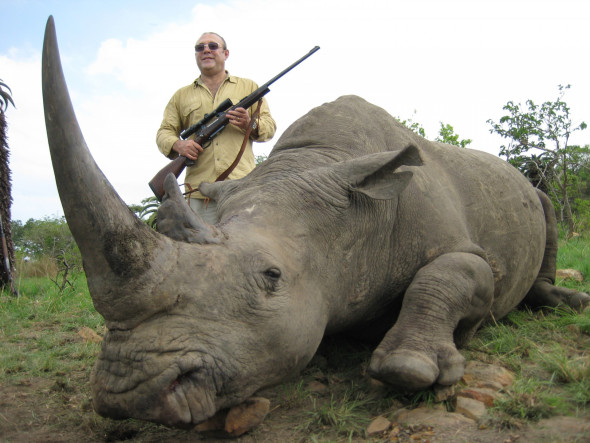
Image Credit: Rhino hunter Alexander Tseytlin
Black rhino hunts have provoked much controversy over the past five years mainly because black rhinos are actually listed as (critically endangered), hence why only five black rhinos can be hunted per year in South Africa and Namibia. Since 1996-2011 the species has been listed as near extinct on the International Union for the Conservation of Natures Red List. Fortunately due to ‘private farming conservation efforts (not wild efforts) the species has allegedly and gradually increased (primarily due to hunting?)’. Both private and wild populations are believed to be increasing within South Africa and Namibia placing the total species population count from 2010 at 4,880 black rhinos.
SOURCE: IUCN BLACK RHINO.
The only reports that we ourselves can offer in regards to black rhino trophy is that of media and press reports that have documented on large scale bidding for black rhino hunts. In January 2014, Corey Knowlton bid $350,000 for a permit to hunt and kill a black rhino in Namibia (Source: Corey Knowlton). Back in June 2016 Namibia offered up three of its black rhinos to trophy hunters. While the price has not been documented its most likely be in the region of just over $1 million(USD) for the three Black Rhinoceros (Source: Namibia black rhino hunt).
Meanwhile back in 1996 a game rancher named John Hume paid about $200,000 for three pairs of endangered black rhinos from the wildlife department of the South African province of KwaZulu-Natal. Among them was a male who would come to be called “Number 65,” and whose death would play a central role in the debate about conservation.
When the black rhino bull arrived, Hume’s farm manager — a burly Zimbabwean named Geoff York whose typical mode of dress is army boots and a pair of purple shorts — tranquilized him, clipped two notches in his left ear and two in the right, and gave him a number: 65. Mr John Hume later picked Mr Peter Thormahlen to organize the killing of ‘number 65’. The price was set at a $25,000 deposit on a $150,000 fee for a seven-day hunt.
Most of that would go to John Hume - the very man that is today advocating for an international legalized trade in rhino horn and has connections to a wide number of organisations such as, WWF, IUCN, CITES, The Department of Environmental Affairs and numerous other figures. Then on July 23rd 2005 Thormahlen and his client with John Hume tagging along proceeded on foot. Suddenly the rhino noticed them and rose from the dirt. The client pulled the trigger, and the first bullet pierced Number 65’s skull. The rhino, still standing, turned. A second bullet hit, and the rhino dropped dead. (Source: John Hume Rhino Hunt).
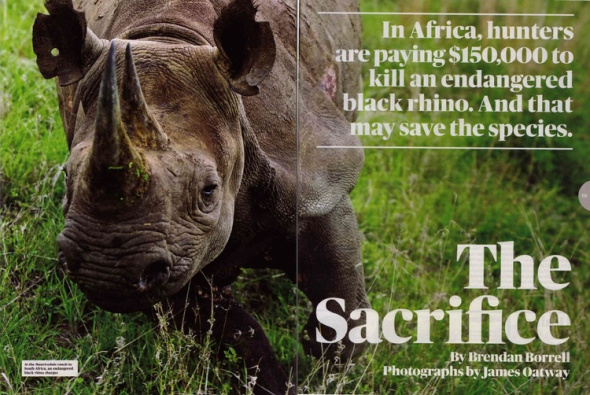
Source: The Sacrifice, please click the source tag for more info
As you can read there is a staggering amount of money parting hands to hunt both black and white rhino. Yet poaching is still skyrocketing? South Africa has lost from 2008 almost 6,000 rhinos to poachers. Back in 2014 Namibia lost a total of 24 rhinos to poaching, then come 2015 a whopping 60 rhinos were poached. (Source: Poaching stats Namibia).
So the question still remains just what exactly is all this money going towards, can each professional hunting organisation prove to me, my organisation and the public that the money generated from rhino hunting is indeed being used to fund anti poaching operations, security, conservation, education, awareness and horn poisoning? (Etc).
While I’ve been extremely silent on this issue too since 2011 I’m going to make it pubic now. I dislike the fact that a ‘prominent South African game hunter’ is involved with the Rhino Orphanage. Back in 2011 we (the organisation) were going to submit funding for scales and equipment, however when running a trace on whom ran the main website, down to a trace on that individuals Facebook page, and more we later discovered a ‘silent partner’ that is hunting many of the big five..
..So who do we trust when it comes to facts and figures? How can we trust anyone that is stating hunting is indeed increasing rhino numbers when literally every individual and organisation are in someway aligned to one another in South Africa and over the borders? Can the Rhino Orphanage and its ‘affiliate’s’ also prove that every single rhino that’s been saved has been released back into a reserve, and not hunted for sport that clearly from this entire document has proved - no amount of hunting whatsoever is increasing rhino populations!
Hunting operations are indeed expensive. While the price of a hunt may indeed seem high. One also has to take into consideration what the farmer and/or professional hunter has to pay for too. Upkeep of land, maintenance of vehicles and buildings, fuel, service charges for gas, electricity, water, and rent Etc, food and beverages for the visiting hunters, guest house uses, damages to guest houses, travel, firearms (among many other bills). Then of course comes anti poaching being the last bill. Some of this expense can be viewed below.
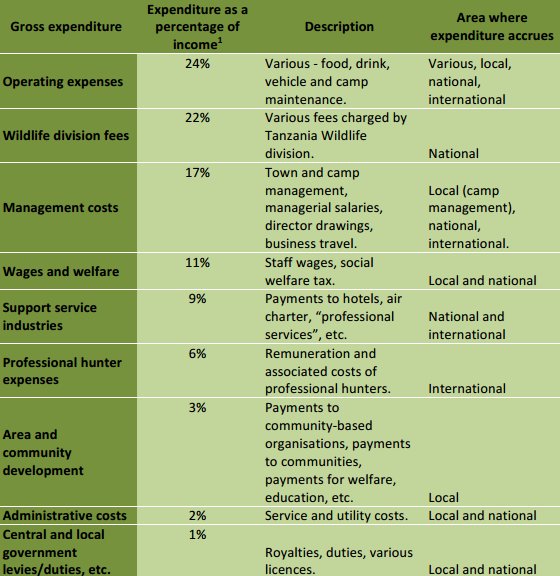
Image: Hunting Charges (Source: IFAW)
While we know that Rhinoceros trophy hunting is indeed expensive, poaching is unfortunately still increasing in various African countries, please do check the sourced links out above, and read that data carefully. The image above with source proves that no big five farmer is taking every single dollar or euro that’s advertises rhino hunting on their site or allows rhino hunting on their property.
So the question remains why are we still hunting rhino for? The question I’ve answered. Rhino hunting is nothing more than a overpaid sport that does nothing whatsoever for conservation and, is not under any circumstances whatsoever contributing to decreasing poaching. All these millions if not billions being made yet here we are still seeing rhinos poached. Finally, and the very best question of them all. If hunting revenue from rhino hunts is not decreasing poaching, how the hell is a so called sustainable rhino horn trade going to decrease poaching? Same money - same prices - going nowhere!
Thank you for reading.
Dr Jose C. Depre PhD. MEnvSc. BSc(Hons) Botany, PhD(NeuroSci) D.V.M.
Master of Environmental, Botanical & Human Science.
Environmental, Botanical and Human Scientist.
What Part of Unethical Conservation Don’t You Understand? | Endangered Species Monday Special.
ETHICAL OR UNETHICAL
Last week we wrote an article in relation to the GoEco student/tourist travel firm, and the Zanchieta Wild Cat Farm. As usual we came under some pretty heavy criticism as apparently we were yet again in the wrong. Within many of the emails that we have received, students have literally blasted us for depicting themselves holding, petting or interacting with African predator cats, many of them cubs that seem to have no mother insight, and could be re-rehabilitated into the wild to boost wild predator populations up.
Back in 2015 from January to December we rolled out yet again another mass educational and awareness campaign aimed at mainly students and overseas tourists that paid up to $1,200USD for a two week visit to the many petting farms, lodges and resorts on the African continent, that was projected onto our main Facebook platform.
I.A.R.F.A’s educational and awareness campaign (2015) saw over 200 students give up this practice (one of many articles you can read here). Furthermore Zebula Golf and Spa Club that was hosting lion petting activities withdrew the practice, and removed adds from their main website. An African zoological garden removed its advertisement for cheetah petting, thus later ending their petting experiences, and finally a painter and artist that was promoting such activities eventually stopped.
The campaign also saw a decline in profit in relation to the Ukutula Game Lodge, and customer star rating, and less students visiting from 2014-2015. Amanzi Travel located within the United Kingdom have also allegedly withdrawn their lion petting advertisements focusing more on ethical conservation. (Amanzi Travel are still the focus of our attention though). The list goes on, and frankly we’re not going to stop until these practices are ceased immediately.
From 2014-2015 the organisation Blood Lions pounded the streets and cinemas (internationally) in relation too the petting and canned hunting industry which has seen quite a significant response from the petting and hunting fraternity too). In the wake of much controversy France has implemented an immediate ban on lion trophies being brought into the country. Now PHASA are at the throats of (Sapa, reported by Blood Lions) demanding the South African Predator Association immediately responds to the canned hunting problem that’s sparked fireworks around the globe. (See video below).
Unfortunately, despite the mass effort that we and others have placed into these projects, students, tourists, even trainee zoologists and veterinarians still thrash it out with us, believing that what they are participating in, is all good fun and doesn’t do the animal any harm whatsoever. Below are just a handful of the lame excuses that we read every week emailed to us in anger.
LAME RESPONSES FROM TOURISTS / PREDATOR PETTING
“None of these cubs were harmed and are all living a peaceful happy life”
“Your information is wrong, petting doesn’t harm the cubs, the cubs don’t have a mother, we’re helping them and their cuddly, so what!”
“Please research your information before posting my image, there is no hunting on this farm whatsoever, leave me alone”
“The image you posted of me misrepresents me, all I was doing was holding the cub for a Facebook photo avatar. I’m doing nothing wrong”.
“Lions are so cute, I can’t wait to go back again”
“They advertise release programs, and I participated in a release program within a fenced in area, none of the animals were harmed, or killed, what’s your problem?”
The above lines are just a handful of lame excuses that we read everyday from tourists, students, petting farms, and alleged predator rehabilitation sanctuaries. Furthermore no matter how much we try to explain, either in basic English or with science - the fact of the matter is this: Many students, tourists and sanctuaries fail to see the damage that they are doing, and contributing too.
Many of the students and tourists that we’ve highlighted as contributing too unethical conservation also scold us for using their images, stating that we’re misrepresenting them holding or petting a “predator cub”. So we’re going to try things a little differently. Back to basics. Below we’ve included a number of images, and under them images we’ve written a brief extract in relation to what’s wrong with each image/ real life scenario. However before we start, lets take a look at what real ethical conservation is within the “captive breeding and release industry”.
Image: Basel Zoological Gardens.
The image above was taken at Basel Zoological Gardens, and as you can see mother, father and three young cubs are happily strolling in the park on a fine late Spring day of (2015). There are no tourists, students or even the hint of petting, interaction, cuddling or manhandling on show here. Mother’s Oka and Uma gave birth to their cubs on May 28th, and June 15th (2015).
Many people may be asking, why are lions being bred and reared within a foreign non-African zoo? The answer to that is simple. Lions are listed as vulnerable (IUCN Red List population map), and while there may be many lions in countries such as South Africa where security is more tight. North and West African lions are practically extinct. Southern Africa is probably one of very few regions now on the African continent that holds more “larger populations”. Unfortunately within the past twenty years Africa has seen a staggering decrease of lion populations by over 30-50%. (See video below.)
Zoo Basel supports the Big Life Foundation, which works in the Amboseli-Tsavo ecosystem in Kenya to protect the Lions. The Zoo is also a participant in the EAZA Endangered Species Breeding Programme for African Lions. This means that every-single lion you see within a zoo that’s part of the EAZA Endangered Species Breeding Programme will eventually be released into the African wild, they’ll not be kept for photography purposes, or to interact with.
For release programme’s to be successful human interference must be kept to a bare minimal. You’ll not see any petting, interaction, man-handling or public photography exploitation going on here. EAZA’s Endangered Species Breeding Programme is what we refer to as “ethical conservation within captivity”, and there is much evidence in relation to EAZA’s working projects too.
UNETHICAL CONSERVATION PRACTICES
Below are prime examples of “unethical conservation practices”. From America too the continent of Africa you’ll not see EAZA’s Endangered Species Breeding Programme allowing this type of behavior. The reasons why you’ll not see such behavior played out within anyone of EAZA’s projects is listed below for your information in plain English.
GENERAL PETTING
Image: Sarah Haley lion petting United States
Back in 2012 Sarah Haley from Fayetteville, Arkansas, United States visited the Wild Wilderness Through Safari. Sarah’s reasons for visiting was quite simple. “I mostly went to play with the lions”. As one can see these lions are very young, and as normal there seems to be no mother or father in sight. What Sarah doesn’t realize is, the mother would have had her young ripped away from her at a young age, just so tourists and students can play petting.
Mother and cub[s] would have been left in quite an emotional state, suffering psychological trauma, and would have pined for one another. Its more or less the same behavior a new born baby and mother will play out when separation occurs. Did it make you feel good Sarah knowing that you was holding a pining mothers cub that simply wanted to behave like any normal human or animal mother?
There doesn’t appear to be any-form of breeding programme in operation at this alleged zoo either. Furthermore this cat will never be released into the wild, because all of its natural instincts have been removed by the human, and imprinted from the human onto the cub. Yet on the African continent we’ve lost over 50% of our lion populations. There doesn’t seem to be any form of hunting advertised, however we are somewhat suspicious here as to why so many cubs are being reared at this zoo, and what the so called zoo’s actual intentions are.
MISHANDLING
Image: Unidentified male at the Zanchieta Wild Cat Farm
Every month we bring into question many safaris, big cat projects, lodges and zoos. Many of them do not participate in hunting, while others are more than “questionable in relation to their mission statement and hunting”, and what they are actually projecting into the public domain (which most of the time doesn’t support their mission statement).
Furthermore contradictions from the owners in regards to their companies mission statement are rampant among such alleged rehab and non-breeding facilities. The image above seems pretty innocent, and quite adorable to most. The image was posted onto the Zanchieta Wild Cat Farm Facebook page of which the Zanchieta Wild Cat Farm has venomously protected as innocent.
Zanchieta have even gone to great lengths in the past week basically stating that were totally wrong, and everything that we’ve located in relation to their company (above and below) is more than legitimate. An insult that we did read stated: “We (Zanchieta Wild Cat Farm) know that this post by I.A.R.F. was done with good intentions, from people who, like us, love animals and fight for their rights”. We do indeed love animals hence why this article is proving wrongdoing and unethical conservation practices. I.A.R.F.A do not under any circumstances support such activities nor will we promote them either. (Please continue reading).
What the young unidentified male seems to be forgetting is that this young cub “may” have been removed from his/her mother at the prime milking age of three weeks old. PAAZAB’s Husbandry and Veterinary Guide states: The cub should also be supported under its bottom with the other hand, cubs must be supported correctly as to not injure the young developing cub. Further to this we all know that cubs aren’t exactly hygienic like their adult mothers and fathers. Regardless of how much Zanchieta Wild Cat Farm defends themselves, the images projected onto their Facebook page are clear signs of “exhibiting to profit from money”. The worst is to come.
Cubs this age want roam, explore, test their young muscles to develop coordination, and sleep for extended periods of time without interruption. They dislike being handled. While Zanchieta Wild Cat Farm states that they protect, rescue and rehabilitate, this behavior is neither protecting the cub, or (at the least) trying to rehabilitate this young cub into the Asiatic wild where the number of tigers are about 3,200 if that remaining in the wild.
Zanchieta Wild Cat Farm also hosts a number of lions identified as the (Timbavati white lions). This area of alleged predator conservation has been a great focus of concern to us, Timbavati white lions are practically extinct. There is said to be more white lions in captivity than in the wild. Meanwhile within the wild there is alleged to be no fewer than 13-20 individuals if that. So why is this predator rehab farm and rescue not helping to support white wild populations with captive breeding programmes? (See video below)
The owner of Zanchieta states via her website “I have never and never will breed or raise any BIG CAT at Zanchieta for onward selling to a third party. Our white lion pride has grown from the original male and female pair to five lions and these lions will never leave Zanchieta”. We believe this statement was written back in 2010 when the main domain and site was formed and registered.
NO THREATENED SPECIES RELEASE PROJECTS
Image: Timbavati white lion cub 2014.
Image: Timbavati white lion cub (new born) 2014.
The Zanchieta owner states: “No further natural breeding will occur as the females are on contraception programs. Our two male brown lions and our brown lioness were purchased as cubs and have never been allowed to breed. They too will never leave Zanchieta.” That statement has been on the main Zanchieta website since 2010, yet the lady is not prepared to release these lions into the wild via ethical conservation projects. Timbavati white lions are as explained (critically endangered), so this statement is very questionable.
Again where is the mother, but more importantly why is Zanchieta stating that none of her lions will be allowed to leave the farm? That’s a classical sign of unethical conservation for reasons that we do not fully understand. This lion as one can see (above) is only a few days old. Furthermore as the owner states none of the lions will be allowed to leave the farm.
If you are familiar with the sub-species of the Panthera leo krugeri, you’ll also know that their populations within the wild are dwindling. So theoretically any good “rescue and rehabilitation project” that states they’re not breeding (when they clearly are), would try to improve Panthera leo krugeri populations within the wild like EAZA’s Endangered Species Breeding Programme. So in our (expert opinion), this farm is nothing more than a breeding and captive facility. Indeed there are some release projects ongoing however as the owner states (no lions leave).
So instead students, tourists and volunteers can all help contribute to (nothing). That in our opinion is a complete waste of money, money that could be spent elsewhere on actual breeding and release projects to sustain threatened populations of predators.
ANIMAL ATTACKS
Image: Chameleon Village Lion Park
Whenever we explain to tourists and students about the petting and interaction industry, they’ll often absorb only a certain amount of information (in most cases), which is why education needs to focus more on every aspect of this industry rather than just hunting. Many Non-Governmental Organisations, and “anti hunting groups” out there, will categorically state on locating a petting/breeding farm, that hunting is the major player regarding their find. Most of the farms, lodges and sanctuaries that we’ve located aren’t actually connected to hunting whatsoever.
So when a tourist or student hears them words I.e. hunting is not ongoing, they automatically believe that all is okay, we’ve got our wires crossed, and we’re simply trying to tar the name of a farm or lodge. International Animal Rescue Foundation Africa researchers every single piece of detail on all industries and practices that we do not support practicing unethical conservation. That includes petting, disease, hunting, abuse, exploitation, and failure to keep to promises (I.e): release programmes, or helping increase threatened species in the wild.
Meet Mr Hennie Pio from South Africa. The image above looks very innocent again, and both the visitor and lioness seem pretty much laid back. Tourists need to remember that predators are like cats and dogs, they all have deeply embedded within their genes (hunting and predator behaviors). For E.g. I once owned a Springer Spaniel rescued as a puppy.
That wee dog was domesticated like any other dog into an adult dog. A few years into life and on a long walk, my pet dog jumped the lead, and naturally went after hens and chickens killing three instantly with a single bite to the neck. Yet the dog hadn’t seen a chicken or hen before, nor had she been raised to hunt. The same applies to lions, tigers, cheetahs, leopards, and jaguars Etc. Just because they’ve never hunted naturally in the wild, and had humans imprint their natural behaviors onto them, doesn’t for one single minute mean that, that animal will not attack you.
Listed below are real life captive predator attacks that left their owners or keepers, tourists and visitors with life threatening injuries or in some cases death did occurred.
WHEN CAPTIVE PREDATORS ATTACK
Jan 21, 2016 Australia: A 12 year old tiger has attacked a keeper at an Australian zoo founded by the late Steve Irwin. The incident, which took place Thursday morning at the Sunshine Coast’s Australia Zoo, left 41-year-old Che Woolcott with “significant puncture wounds” to his head and forearm, according to local media reports. He was treated at the scene before being transferred to the hospital.
Nov 29 2015 Malta: Ħal-Farrug zoo was closed by its owners after a tiger severely injures a 3 year old boy. A spokesman for the zoo said the incident happened when the two handlers were walking the “friendly” tiger, which they had raised, outside its cage since it had been slightly unwell. The tiger was lying on the floor when the incident happened. Upon seeing the animal, the boy ran towards it, prompting the tiger to raise its paws, lashing the child in the face in the process, the spokesman said.
Jun 1, 2015 Johannesburg, SA: Katherine Chappell, 29, a visual effects artist for Game of Thrones, was killed and her tour guide seriously injured in an attack by a lioness at the Lion Park near Lanseria. The two people were travelling in the car with their windows open. It’s understood a lioness jumped through the open window, biting the woman who was in the passenger seat. The driver, a tour guide, was badly injured while attempting to free the woman from the animal’s grasp. The park’s Scott Simpson said, “There was a car driving to the lion camp and the lioness came through the window and it bit the tourist. The ambulance arrived quite soon but the lady has passed away.” Three months ago an Australian tourist was bitten in the thigh while driving though the park, also with his window down.
Please view the video below which shows the worlds top ten predator on human attacks, Mr Hennie Pio is in our opinion a very lucky man, like most of the students, tourists and visitors that man-handle allegedly “friendly hand reared predators”. They’re only friendly if they want to be. When you place yourself within a predators environment your acting irresponsibly, furthermore if that animal attacks you, its very likely the animal will be shot dead.
Lastly if your lucky to walk away with minor or serious injuries its highly unlikely that your insurance will cover you, and you have very little chance of receiving compensation - because you placed yourself in that predators environment.
ZOONOTIC DISEASES
Image: Helping Hands for Underprivileged Children
While we all like to visit animal shelters, and provide a helping hand, one will find that some animal shelters and farms in the Western Hemisphere will point out to you the notices that inform you not to pick the animals up, touch the animals, feed them and always ensure that your hands are washed should you come into contact with animals. The reasons for these “polite notices” is to ensure you do not fall ill with anyone of the known zoonotic diseases that are fatal in some cases.
The organisation identified (above) as Helping Hands for Underprivileged Children is where the image above derives from (click the link above that’ll direct you too the Facebook image). The image was picked due to myself being a parent, and because I know just how easy it is for a child to unknowingly place their hands within the mouth dozens if not hundreds of times a day. The data below we do advise you take seriously.
When zoonotic diseases pass from animals to humans, pandemics can result. When a pathogen leaps from some nonhuman animal into a person, and succeeds there in making trouble, the result is what’s known as a zoonosis.
The word zoonosis is unfamiliar to most people. But it helps clarify the biological reality behind the scary headlines about bird flu, SARS, other forms of nasty new disease, and the threat of a coming pandemic. It says something essential about the origin of HIV. It’s a word of the future, destined for heavy use in the 21st century.
About 60 percent of all human infectious diseases currently known are shared between animals and humans. Nearly all zoonotic diseases result from infection by one of six kinds of pathogen: viruses, bacteria, protozoans, prions, fungi, and worms. Toxocariasis is a mild zoonosis caused by roundworms; you can get it from your dog, cat or in this case a predator. But fortunately, like your dog, cat or predator, you can be wormed. On some farms the owners lie to the public, and there is no way of telling if these animals are treated. Should the animal not be treated as the owners have advertised - your insurance doesn’t cover this either. Your unlikely to be compensated, and you could spend anything from 2 months to 1 year+ off work, or out of action.
Fore more information on zoonotic diseases in lions click the link below. here http://cbs.umn.edu/research/labs/lionresearch/research/diseases
We have deliberately left out all mention of hunting within this article, because frankly many tourists, students and visitors that visit predator farms seem to believe that if hunting is not seen as the “major problem”, then all is as explained pretty much okay. The petting and interaction industry can at times be directly related to hunting, however there are as seen above other issues that you need to take into consideration over hunting.
If you believe an image that we have posted “misrepresents you”, then just stop and think how that individual predator cat thinks about you misrepresenting them as a cuddly “pet”. International Animal Rescue Foundation Africa supports all EAZA’s breeding projects, reputable projects that do take in predators that are unable to be released into the wild, I.e: circus, rescues, domestic rescue Etc. We are able to view the lies and contradictions within each alleged rescue, lodge, farm or sanctuary and can if required go to great lengths to prove “unethical conservation practices are being played out here”, with more than sinister motives possibly attached.
This article hasn’t been written to attack, or place blame, but more point to where problems are occurring within the predator breeding and petting industry. If your allegedly rescuing, and rehabilitating then please print and practice just that. If your not breeding and have stated all your animals are on contraceptives, then keep to that promise. If you knowingly understand ethical conservation and really do plan on helping wildlife in their endemic wild, then please practice that. Please do not mislead the public into thinking that your indeed 100% ethical - as we will find you, and highlight them problems always steering the public into the correct conservation path.
If you feel that you’ve been led astray and would like to visit and participate in ethical conservation, please click the links below.
EAZA: http://www.eaza.net/about-us/vacancies/
WORKING ABROAD: http://www.workingabroad.com/projects/south-africa-lion-volunteer
PROTRACK: http://www.protrackapu.co.za/news-blog
BIG CAT RESCUE: https://bigcatrescue.org/get-involved/volunteer/
RHINO ORPHANAGE: https://www.helpgoabroad.com/volunteer-abroad/specialist-rhino-orphanage-and-rehabilitation-centre-2306/
Thank you for reading.
Chief Environmental Officer
Dr Jose C. Depre.

